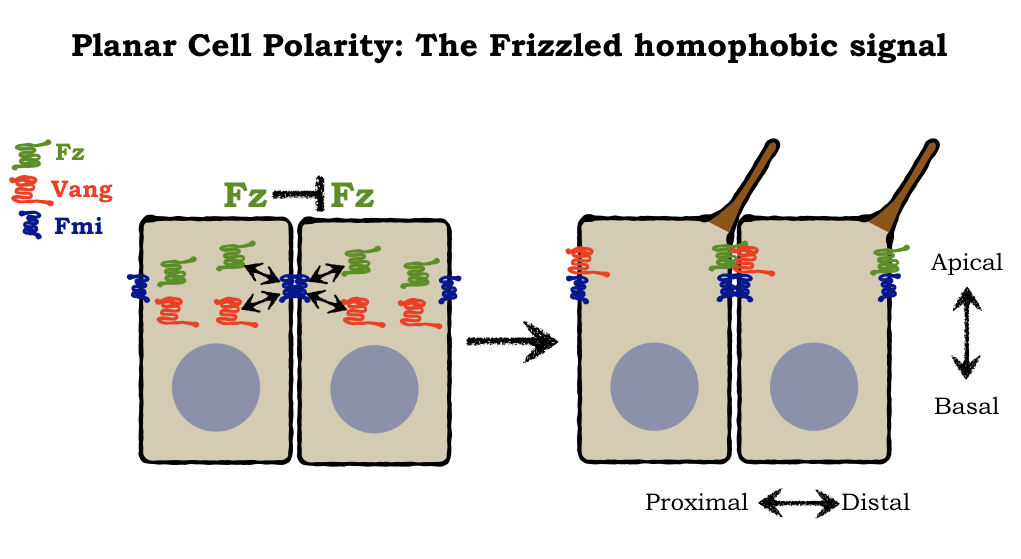The cell’s capacity to integrate and respond to spatial information is a crucial feature of morphogenesis and development. The Planar Cell Polarity (PCP) pathway is a signaling mechanism, widely conserved across metazoans, providing spatial orientation along the plane of an epithelium in morphogenic processes ranging from insect wing patterning to mammalian cochleae. Although the core genes involved in the PCP pathway have been molecularly identified in the 1990s, the PCP signaling mechanism remains controversial. In this article I discuss the main players and previous models of PCP signaling reported in the literature, and propose a new model. According to it PCP is established through an homophobic signal by transmembrane protein Frizzled (Fz): 1) a Fz signal in one cell repeals Fz itself in the adjacent cell, thereby generating symmetry breaking; 2) the instructive PCP signal is conveyed through Fz interaction with atypical cadherin Flamingo (Fmi). More broadly, homophobic signaling may represent a novel mechanism for cell-cell signaling of spatial information through modulation of cell adhesion rather than canonical ligand-receptor binding.

